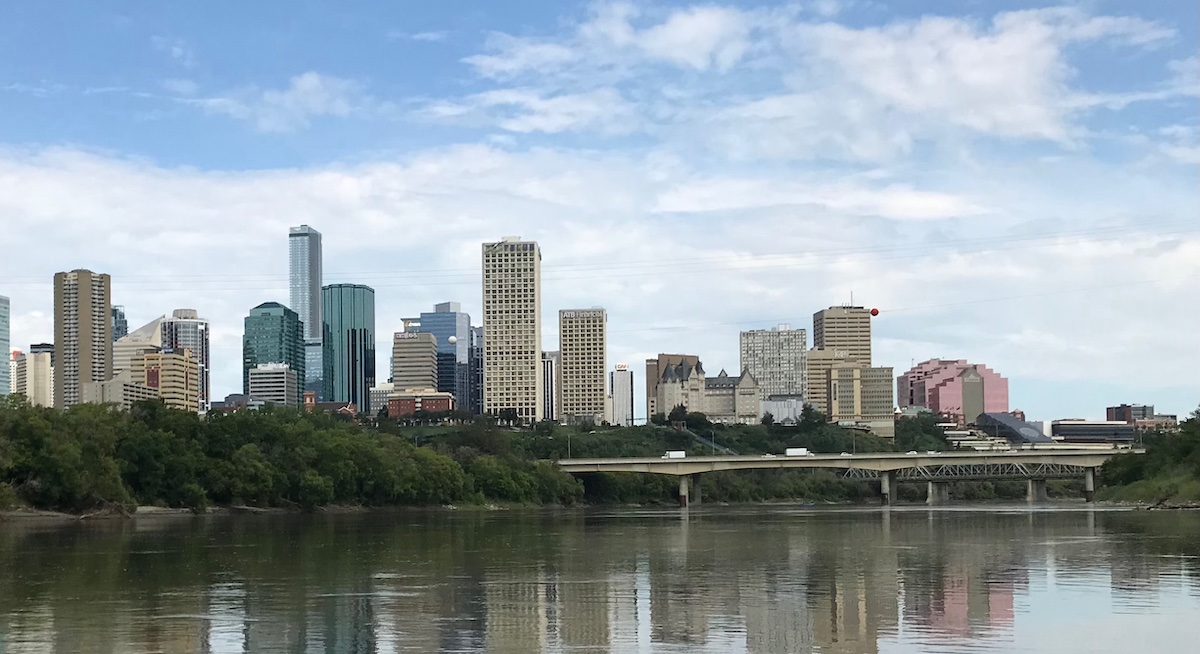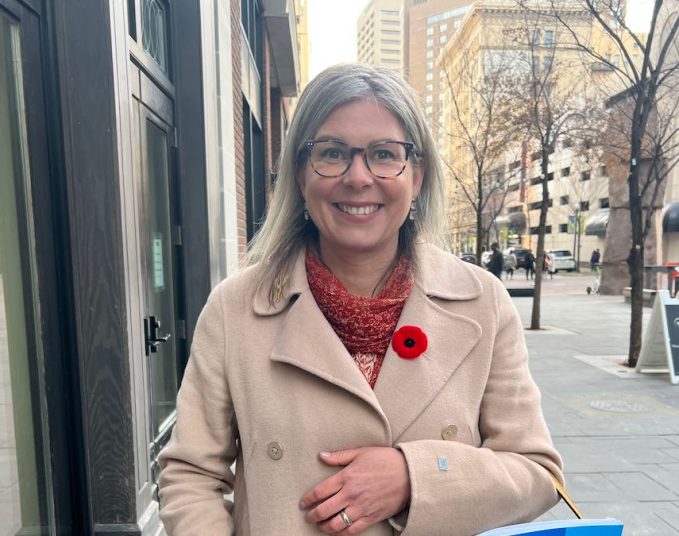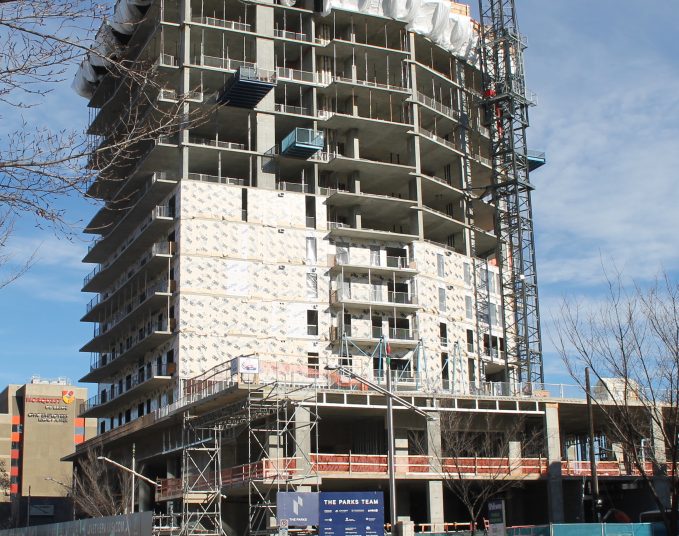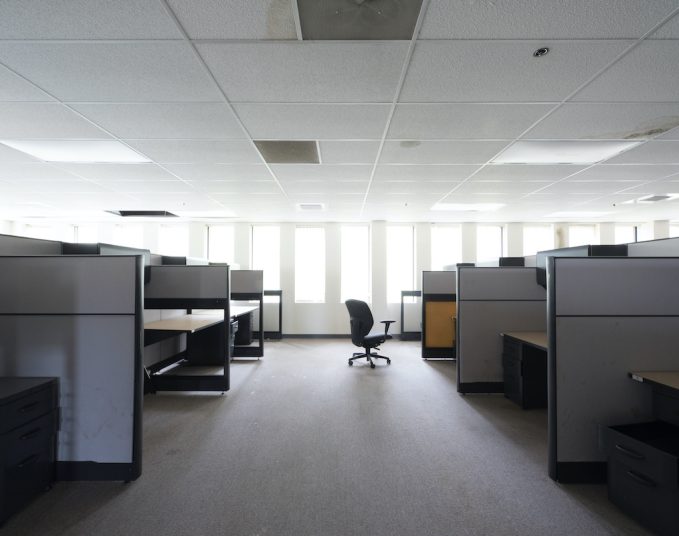While Calgary has enacted a plan to subsidize downtown residential growth, Edmonton is still talking about it, and will be talking about it for months to come.
“What’s the plan for downtown?,” said Kalen Anderson, the CEO of the Urban Development Institute — Edmonton (UDI). “This should be setting off alarm bells. If you are looking to invest in a project in Calgary or Edmonton, which one is more viable today?”
She said the choice is clear — it’s Calgary.
Anderson’s frustrations were triggered by City Council’s 8-5 vote to reject a plan that called for subsidizing residential development in the core to an equivalent of around $40 a square foot.
“This is not a core service,” said Mayor Amarjeet Sohi, as he urged council to reject the plan. “This is not something that I can justify to taxpayers, that it’s OK to subsidize private industry with tax. We need to be disciplined about our finances and we need to send a very strong message that we have serious issues around how we resource our city. We need to prioritize and we need to make tough decisions.”
In 2023, administration was tasked to come up with solutions to a concerning problem; that, while Edmonton’s population was booming, downtown residential development had stalled.
Developers had approached council, warning that, under current market conditions, there was no appetite to convert empty office space to residential units, or break ground or new residential projects. Banks don’t want to finance these projects. Rental projects are the way to go, but rents aren’t high enough to justify the capital costs. And, the condo market in Edmonton is dead — and is not expected to resurrect itself for at least another five years.
As Coun. Aaron Paquette said this week, the city grew by about 40,000 people last year, and a similar surge is expected in 2024.
Yet, despite that growth, downtown residential development has stalled. As council heard this week, 3,500 units were added over the past decade. There are 1,138 units under construction at the moment. But, no ground has been broken on new downtown residential developments since 2021.
According to UDI, the office vacancy rate in downtown Edmonton stood at 24 per cent as of the middle of 2023.
Why is downtown development so important? As administration told council, it takes up just one per cent of the city’s total land, but provides nine per cent of the tax revenue. A healthy downtown subsidizes the rest of the city.
Calgary has enacted a Downtown Development Incentive Program, which offers $75 per square foot for the conversion of dead office space to residential. It has 13 office-building conversions that are already underway, and four more under review. Calgary forecasts that these conversions will add 2,300 new units to its downtown.
While council as a whole rejected a similar plan, there was support from Coun. Anne Stevenson, who represents the core.
“Building a residential base in the downtown is one of the most important, long-lasting and transformative changes we can make,” she said. “I think it’s a critically important investment for us to make.”
She was backed by Coun. Andrew Knack, who acknowledged that, for a city that is adding tens of thousands of new people, all of the development is heading to the ‘burbs.
“If we were looking for the best bang for our buck, we’d be building outside the Henday,” said Knack. “I appreciate we all know there’s a larger cost to that in terms of infrastructure and maintenance and all of that. But, in terms of getting housing units done today that would actually be the best use of our money, when I think about wanting to build, we want to build across the entire city. That includes the downtown, where we need that vibrancy.”
Paquette, Sarah Hamilton and Tim Cartmell filled out the five councillors who supported moving forward with the next step of the funding plan.
But Coun. Michael Janz said that, for a city that recently declared a housing emergency, it’s not in its best interest to subsidize “boutique, high-end” residential projects. The focus should be on using public money on affordable units.
The UDI’s Anderson hopes that, while the grant system is off the table, that there will be conversations about other methods to stimulate downtown development.
“It’s in Edmonton’s best interest to not let the conversation drop,” she said. “We need to have a lot more creative discussions. We need to ask, ‘what do we want our downtown to be?’”
Council did approve a measure that would see if current community revitalization levies (CRLs) could be altered or extended in order to find money to help subsidize downtown residential projects. A CRL is administered by the province, and allows a municipality to borrow against future, planned tax revenues in order to fund current projects. Downtown currently has a CRL in place. But, any changes to a CRL need to be OK’d by the province.
Anderson and UDI are frustrated that the City is only beginning this process. Her question: Why did it take so long to go to the province? In her view, while Edmonton is talking about what it might do, what it could do, Calgary is doing.
In a letter to council, UDI expressed its frustration .
“We are discouraged that no material progress has been made since this item was last discussed at the Urban Planning Committee in the fall (of 2023) and disappointed that our expertise, which was requested by both committee and administration, was not thoroughly integrated and considered.”
Savvy AF. Blunt AF. Edmonton AF.




